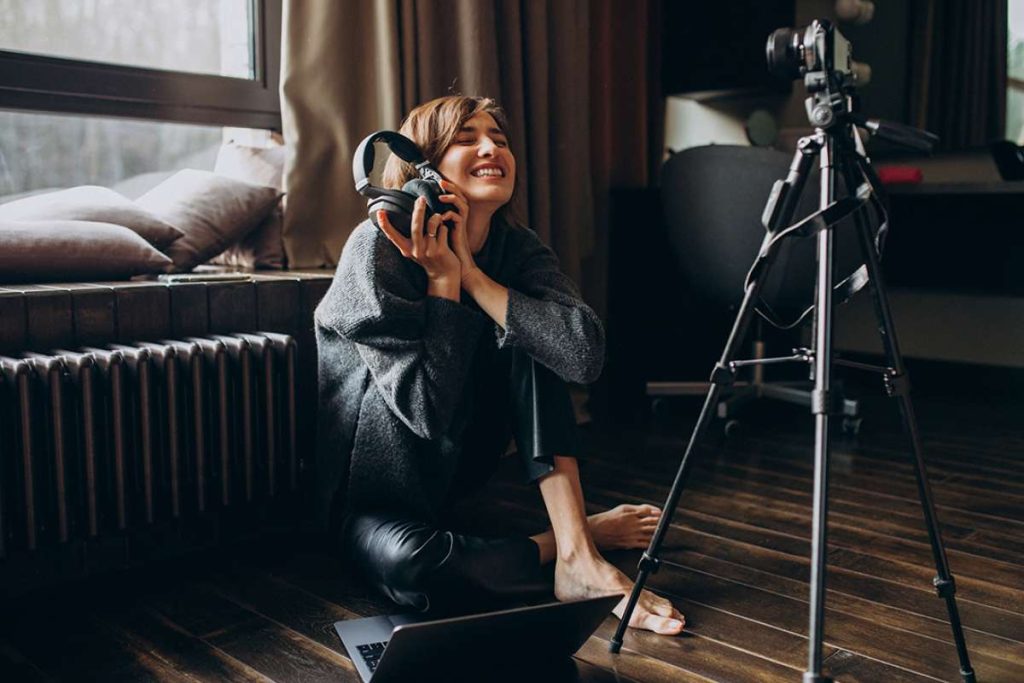Nearly every creator has been where you are now, wondering how to use music on YouTube without getting hit with a copyright claim. Let’s set the scene: you’ve just perfected the edit on your latest YouTube video. The visuals are stunning, the pacing is spot-on, and the music – your favorite song from an artist you love – elevates the entire piece. But there’s a problem: you don’t have the rights to that song. Uploading it as-is could result in a copyright claim, demonetization, or even removal of your video. As a content creator, you need to understand how to use copyrighted music on YouTube legally.
This is a step-by-step guide to using copyrighted music in YouTube videos. We’re licensing experts and will help you understand how music copyright works and how to navigate YouTube to avoid copyright claims.



Quick Summary of How to Use Music on YouTube Legally:
- Most music is copyrighted, so you need permission to use it and avoid getting a copyright claim.
- Despite outdated guidance online, there is now an easy way to use copyrighted music on YouTube! Lickd is the world’s first music licensing platform for creators where you can license copyright music for YouTube. Get licenses within a few clicks and from as little as $8.
- Alternatively, you can avoid copyright altogether by using royalty-free music, leveraging fair use, songs in the public domain or creative commons. However, these options are limited, usually lower quality, and generally still cost you money.
Understanding Music Copyright
What Is Music Copyright?
Music copyright is a legal framework that protects the rights of creators over their original works. When a musician composes a song, they automatically hold the copyright to that piece. This grants them exclusive rights to reproduce, distribute, perform, and license their music.The Importance of Licensing
Using copyrighted music without proper authorization can lead to legal consequences. Licensing is the process of obtaining permission from the rights holder to use their work. This ensures that creators are compensated for their efforts and that users can legally incorporate music into their projects.How Music Copyright Works on YouTube

YouTube’s Content ID System
YouTube employs an automated system called Content ID to identify and manage copyrighted material. When you upload a video, Content ID scans it against a database of registered works. If it detects copyrighted content, the rights holder can choose to:- Claim your monetization of the video
- Block the video entirely, or mute part of it
- Track the video’s viewership statistics
Consequences of Copyright Infringement
If you use copyrighted music without proper licensing, you may face:- Monetization Loss: Ad revenue may go to the rights holder.
- Video Removal: The video could be blocked or taken down.
- Channel Strikes: Accumulating multiple strikes can lead to channel termination.
Common Misconceptions About Using Music on YouTube
“Fair Use” Isn’t a Free Pass
Fair use is a legal doctrine that allows limited use of copyrighted material without permission, typically for commentary, criticism, or parody. However, it’s a gray area and not a guaranteed defense. Relying on fair use can be risky, especially if your content doesn’t clearly fall under these categories.Royalty-Free Doesn’t Mean Free
Royalty-free music means you pay a one-time fee to use the music without ongoing royalties. It doesn’t mean the music is free. These tracks are usually still copyrighted (despite what it sounds like!) As a result, using royalty-free music usually still requires you to have a subscription with a music licensing company.Legal Ways to Use Music on YouTube
1. Get Permission from copyright holders
Contacting the rights holders to get explicit permission was traditionally the way to license mainstream music. However, this can be time-consuming and expensive, especially if multiple parties hold rights to the song. There is an easier way to do this, with the new music licensing platform, Lickd! We’ll explain how this works below.2. Use Music from the Public Domain
Public domain music is free to use without licensing. However, most popular songs are not in the public domain, and the selection is limited.3. Utilize Creative Commons Licenses
Some artists release their music under Creative Commons licenses, allowing use under specific conditions. Always check the license terms, as some may require attribution or prohibit commercial use.Introducing Lickd: Your Solution for Copyrighted Music
Navigating music licensing can be daunting, but Lickd simplifies the process. Lickd is a platform that provides licensed music from popular artists, allowing creators to legally use high-quality tracks in their YouTube videos.
How Lickd Works
- Extensive Music Library: Access a vast collection of tracks from well-known artists.
- Affordable Licensing: Obtain licenses at a fraction of the cost of traditional methods.
- Content ID Protection: Lickd’s proprietary technology ensures your videos won’t be flagged by Content ID.
- Easy Integration: Seamlessly incorporate licensed music into your content without legal hassles.
Benefits of Using Lickd’s mainstream music
- Grow your channel: creators using Lickd’s mainstream music have seen massive uplift in their video engagement, like 35% more watch time, DOUBLE the views, and 76% more likes.
- Enhance Content Quality: Use popular music to elevate your videos and take them to filmmaker level. Use music your viewers actually recognise to improve their viewing experience and evoke emotions like nostalgia.
- Save Time and Money: Avoid the complexities and cost of direct licensing negotiations with music that rivals the cost of royalty-free. Why settle for less?
Steps to Legally Use Copyrighted Music in Your YouTube Videos
- Sign Up: Create an account with Lickd and pick the plan that suits you best.
- Find your perfect soundtrack: Search for music that fits your content.
- Purchase a License: Pay a one-time fee for the music you want and get instant licenses.
- Use the music in your video: Incorporate the music into your video. (Check out our guide on how to add music to YouTube videos if you need help with this)
- Publish with Confidence: Upload your video as unlisted initially so we can clear any copyright claims for you. Then you can publish with confidence, knowing it has protected from copyright claims.

Additional Tips for Using Music on YouTube
- Always Read License Terms: Understand what your license covers.
- Keep Records: Maintain documentation of your licenses.
- Stay Updated: Licensing agreements can change; ensure your usage remains compliant.


